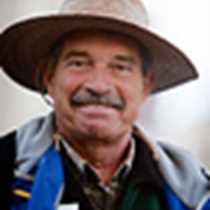San Jose del Cabo and Gorda Banks
All night long we had travelled from the “boca” (mouth) of Magdalena Bay down south, to the end of the peninsula (Land’s End or Finisterra). By first light we were in view of the touristy city of Cabo San Lucas. This is where, during the reign of the Manila Galleons from Spain, the English pirates hid and attacked these slow galleons, loaded with all types of goods from China and the Spice Islands to Mexico, to be transferred across the country, to the Atlantic, and thence to Spain. Sir Francis Drake was one of these pirates. Eventually the Spanish king ordered the galleons to bypass Cabo San Lucas and to head straight down to Acapulco.
We stopped there, and viewed the rocks and the arch at Land’s End, and immediately set sail to the eastern town of San Jose del Cabo. This much nicer little town was founded by the Jesuit priests also, and the mission was built here at the beginning of the 18th century. This place was chosen as it is one of the few places on the whole peninsula where there is water, and the natives were there. Then, in 1726, the natives began a rebellion against the Spaniards, which ended with the total eradication of the three native tribes of the peninsula by 1734.
Today we docked at a marina in San Jose del Cabo, and drove into town to a small waterway or “estero.” Here we enjoyed the birdlife with a good number of water birds. And the town was also interesting, as we visited the old mission and the many small shops.
By lunchtime, we were out of the marina and in open water, sailing east towards the Gulf of California. And, of course, the first thing we saw was a good number of humpback whales. This is an area where those animals, which spend summer off the coast of British Columbia and northern USA, come to rest and pup, and the males fight each other for the attention of the females. We saw, during the afternoon, a series of whales which included males and females. Some were frolicking very near our ship, oblivious to our presence! Eventually we had to proceed due east, then east-northeast, to visit the Gulf of California tomorrow.




